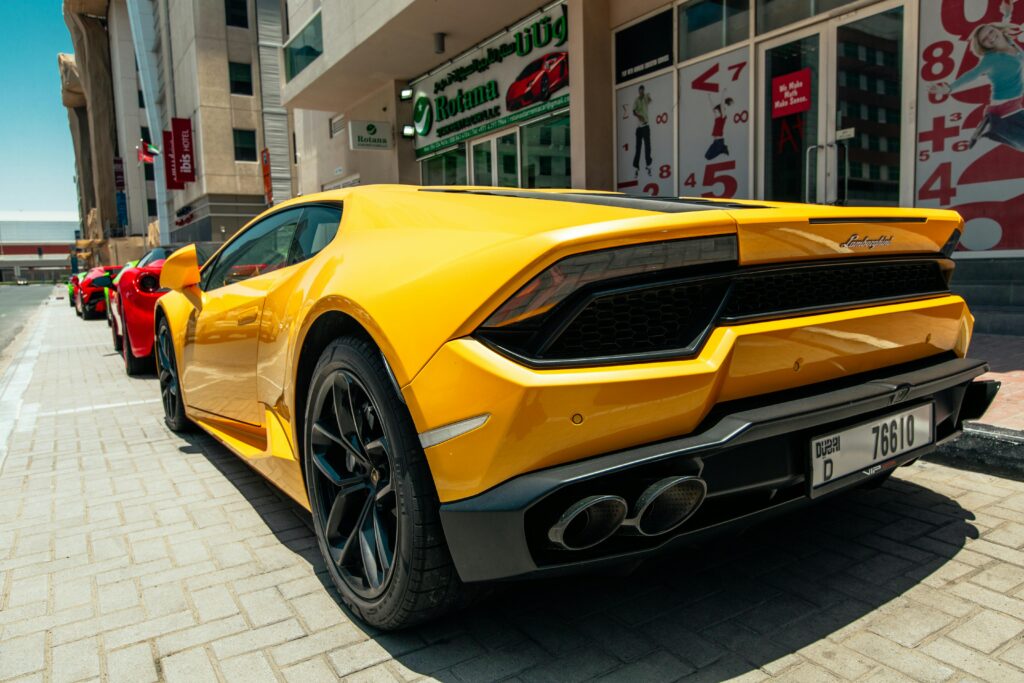
In the opulent landscape of the Middle East, where luxury is synonymous with status and prestige, few symbols stand out as boldly as the gold-plated car. This phenomenon goes beyond mere transportation; it embodies a lifestyle of extravagance and exclusivity. From the bustling streets of Dubai to the royal palaces of Saudi Arabia, the allure of these gilded vehicles captivates both locals and international spectators alike.
1. Historical Context
Luxury cars have long been prized possessions in the Middle East, dating back to the region’s rapid economic boom fueled by oil wealth in the mid-20th century. As affluence soared, so did the demand for prestigious vehicles that reflected opulence and prosperity.
2. Characteristics of Gold Cars
2.1 Uniqueness and Customization
Gold cars are not merely painted; they undergo meticulous customization processes that involve plating with real gold or incorporating gold accents. Each vehicle is uniquely tailored to reflect the owner’s taste and wealth, often featuring intricate designs and bespoke finishes.
2.2 Symbolism and Status
In Middle Eastern culture, owning a gold-plated car signifies more than wealth—it symbolizes power, influence, and social standing. These cars are reserved for elite circles, including royal families, business tycoons, and celebrities, who use them to make a bold statement of their affluence.
3. Popular Gold Car Models
3.1 Exotic and Luxury Brands
Top luxury car manufacturers such as Rolls-Royce, Bentley, and Lamborghini offer special editions or customizations that cater to the Middle Eastern market’s penchant for extravagance. These models feature state-of-the-art technology, luxurious interiors, and, of course, the signature gold finish.
3.2 Limited Editions and Custom Builds
Beyond standard offerings, bespoke gold cars are commissioned by wealthy individuals seeking exclusivity. These custom builds can involve additional luxury features, personalized detailing, and collaborations with renowned designers or artists to create truly one-of-a-kind masterpieces.
4. Economic Impact
The demand for gold-plated cars has bolstered the Middle Eastern automotive market, contributing to a niche segment of high-end vehicle sales. Manufacturers and dealers capitalize on this trend by showcasing limited editions and exclusive models, driving sales and stimulating economic growth within the sector.
5. Cultural Significance
5.1 Art and Craftsmanship
Craftsmanship plays a crucial role in the creation of gold-plated cars, blending automotive engineering with artistic expression. Skilled artisans meticulously apply gold leaf or plating, ensuring each vehicle meets the highest standards of craftsmanship and aesthetic appeal.
5.2 Influence on Pop Culture
Gold cars have transcended their role as mere vehicles, becoming cultural icons featured in media, entertainment, and social media platforms. Their presence underscores the region’s affinity for luxury and innovation, shaping global perceptions of Middle Eastern wealth and extravagance.
6. Environmental and Ethical Considerations
While admired for their beauty and luxury, gold-plated cars raise concerns about sustainability and ethical consumption. The resources required for such opulent customizations, including precious metals and energy-intensive processes, prompt discussions on environmental responsibility and sustainable luxury practices.
7. Technological Advancements
Advancements in automotive technology continue to enhance the allure of gold-plated cars in the Middle East. From advanced safety features to cutting-edge entertainment systems, these vehicles combine luxury with innovation, appealing to tech-savvy consumers who seek both performance and prestige.
8. Ownership and Regulations
Ownership of gold-plated cars in the Middle East is not without its regulations and considerations. While customizations are celebrated, legal frameworks and import/export restrictions govern the acquisition and usage of these high-value vehicles, ensuring compliance with local laws and international standards.
9. Social Media Influence
Social media platforms play a pivotal role in amplifying the allure of gold-plated cars, with influencers and enthusiasts showcasing these vehicles to global audiences. The visual appeal and exclusivity of gold cars generate widespread admiration and curiosity, further fueling their demand in the luxury automotive market.
10. Impact on Tourism
Gold-plated cars contribute to the region’s allure as a luxury travel destination, attracting affluent tourists and car enthusiasts eager to witness these marvels firsthand. Luxury car tours and exhibitions showcase these vehicles alongside iconic landmarks, highlighting the intersection of automotive excellence and cultural heritage.
11. Cultural Exchange and Diplomacy
Gifts of gold-plated cars have been exchanged between nations and dignitaries as symbols of diplomacy and goodwill. These gestures underscore the diplomatic significance of luxury vehicles in Middle Eastern culture, forging connections and fostering international relations.
12. Future Trends
Looking ahead, the future of gold-plated cars in the Middle East appears promising, driven by ongoing innovation and evolving consumer preferences. Technological advancements, sustainable practices, and shifting market dynamics will shape the next generation of luxury vehicles, ensuring they remain at the forefront of automotive excellence.
13. Global Appeal
The allure of gold-plated cars extends beyond the Middle East, captivating global markets and inspiring automotive trends worldwide. As symbols of luxury and prestige, these vehicles resonate with discerning buyers seeking to make a statement of wealth and sophistication.
14. Cultural Legacy
Gold-plated cars represent a cultural legacy that blends tradition with modernity, showcasing the Middle East’s rich heritage of craftsmanship and innovation. Their enduring popularity underscores their status as enduring symbols of luxury and aspiration in a rapidly evolving global marketplace.
15. Conclusion
In conclusion, the gold car phenomenon in the Middle East is a testament to the region’s appreciation for luxury, craftsmanship, and innovation. These vehicles not only serve as status symbols but also embody cultural pride and economic vitality, reflecting the dynamic intersection of tradition and modernity in one of the world’s most affluent regions.